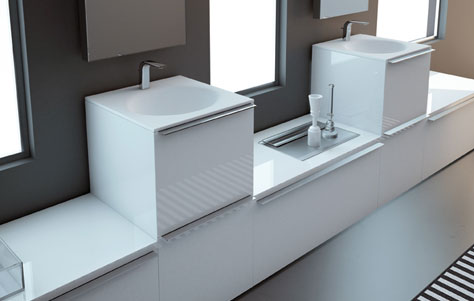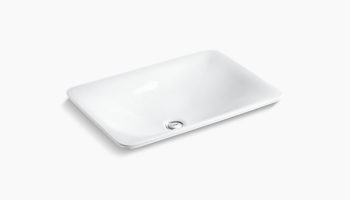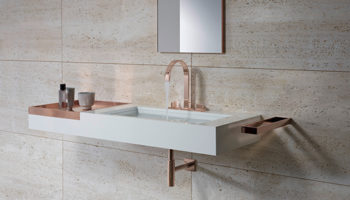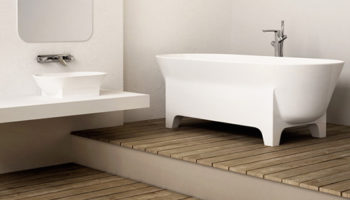The Modular KA Bathroom Collection by Francesc Rife for Inbani
When visualizing a modern seating arrangement I often think about modular pieces that can be moved around a room. Thanks to the geometric design specialist known as Francesc Rife, he’s taken the same idea and plugged it into the solid pieces of his KA Collection for his modular bathroom creation for Inbani.
KA Collection. Designed by Francesc Rife. Manufactured by Inbani.
The Geometry of the KA Collection Creates a Modular, Modern Bathroom Design
Rife “responds to the concern to ensure that the bathroom is a warm, domestic, able to match in prominence to other rooms in the house,” describes Inbani of the cubic collection. Consisting of modular parts that are independent in combination and strategic placement – but which could clearly not be shifted around the room when the mood strikes due to integrated plumbing – the idea of its versatile configuration is less common in bathroom sink, tub and vanity pieces.

Continuing on in defining the gorgeous lines and separates that make innumerable bathroom designs when combined with various square footage restrictions, tile additions, etc. Inbani states of the KA Collection: “Set of different heights, widths and depths to achieve a dynamic effect in a space that used to be rigid. Both the sink and the bathtub, made of resin, characterized by the absence of straight lines and their organic status. Their sinuous forms contrast with the rest of the furniture cubic markedly, achieving a perfect balance in the amount of space. The mirror element in the bathroom, functions as a single piece or as a coating, with the possibility of becoming an integrated container.”

About the Designer: Born in the year 1969, the interior designer and industrial designer with the complicated name of Francesc Rife was born in Sant Sadurni d’Anoia, Spain. At a mere 25 years of age, Rife opened his Barcelona-based studio in 1994. Focusing lately on more commercial projects and independent, contract work, his design philosophy is based on calculated, spatial properties spun into the aesthetic design of his work that he describes as the “geometrical balance of volumes and the formal sobriety”.




Leave a Reply